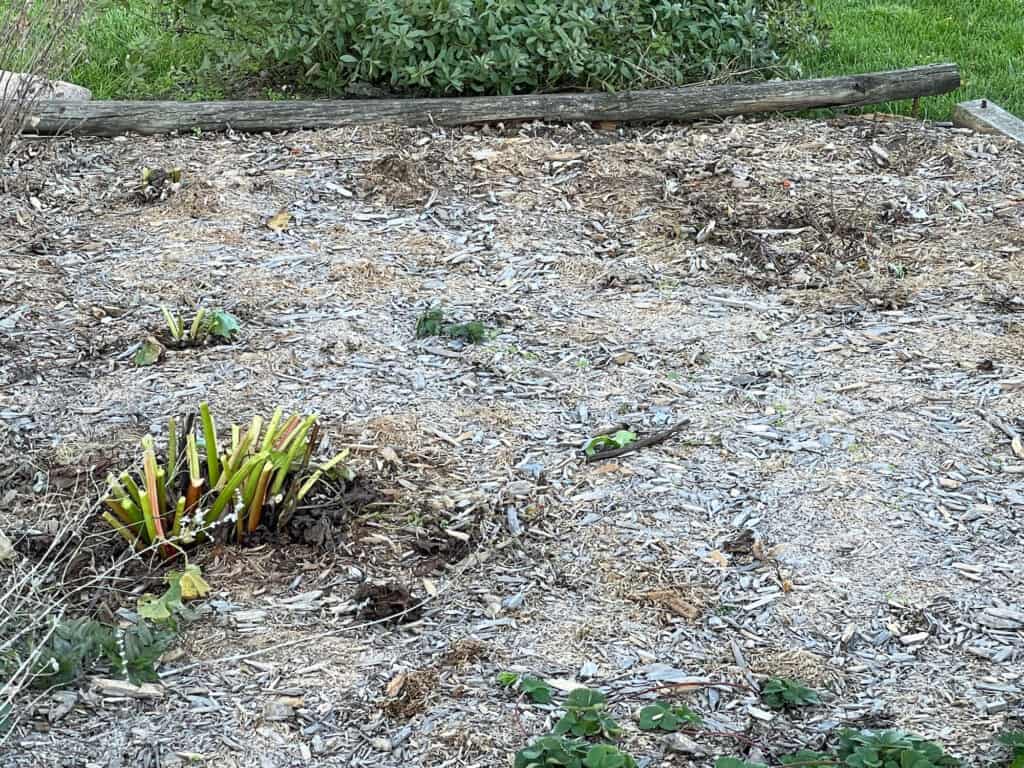How to winterize your garden is not a sexy simple living blog topic, but it’s an important one! Even if you don’t have acres of property, you can still use the tips and tricks in this post to your advantage.
After living on our fixer-upper little farm for almost four years now, we have a tried and true garden winterizing process that works for us. As a quick backstory, I am not a habitual procrastinator by any means. However, when it comes to extending the blooms and veggies in my garden, I am that person who hates to uproot anything that still looks like it’s thriving, regardless of the looming weather forecast. It’s easy when your flower pots are bursting with gorgeous blooms!

Then the inevitable happens. A frost hits and those gorgeous blooms are wilted, dead, and need to be addressed.
Why It’s Important to Winterize Your Garden
There are several reasons to winterize your garden before the snow flies.
- It makes your yard and garden neater. Putting everything away and preparing your flower gardens and vegetable beds for the cold months ahead gives you that spring cleaning type of accomplishment.
- It keeps critters out of your yard, garden, and maybe your house. Leaving vegetables rotting in your garden is a recipe for disaster, aka skunks and mice trolling around. They’ll be in heaven, but you won’t feel the same way, especially if you have a dog or two.
- It keeps your garden disease free. Although there are some beneficial bugs in gardens, I don’t like to tempt fate. Remove any rotten veggies or fruit, and trim back perennials to give your garden the best chance for success in the spring.
Now on to some great tips to help you winterize your garden.
Start with a Quick, Walk-Through Assessment
Walk around your house and through your yard, as well as any garden spaces you have. Make note of any tools you will need to gather. For us, that means large leaf bags, rakes, a shovel, a wheelbarrow, and various trimmers.
Empty and Store Decorative Items and Store Patio Furniture
We always start by removing annuals from flowerpots and transferring the pots into our barns for winter storage. Good quality flower pots aren’t cheap, and if you leave them outdoors during the winter, they’re likely to crack. We also move most garden accessories inside too, although I make sure we leave a bird feeder or two stocked with seeds or suet for the lovely cardinals that like to hang around! We finish by stowing away patio furniture. tiki torches, and our grill. Here at Sunny Side Up, we want what we spend our money on to last. And that means taking care of things properly and not cutting corners when we really don’t want to do outside chores.
Remove Annuals from Flower Beds and Cut Back Perennials


Next, we dig up wilted and dead annuals and cut perennials back. Now, there are some gardeners who don’t cut their perennial flowers back, stating it helps protect beneficial bugs during the cold months. However, I don’t like to risk disease, and learned the hard way when I lost some daisies last year.

I love looking at the “after” photos once I’ve cut plants back and cleaned up yard debris.
Clear Vegetable Gardens
Don’t forget to bag up leftover vegetables in your garden. Although it may be tempting to chuck everything in your compost bins if you have them, it’s important to leave your bins for vegetable pieces that don’t contain seeds, leaves, and plant pieces that don’t contain seed heads. You’ll have an interesting surprise in the spring if you don’t!
Add a Layer of Mulch or Leaves
You better believe we get tired of raking leaves, especially with four gigantic maple trees in our yard. However, leaves make an incredible, protective mulch layer, and best of all, it’s free. We rake all of the leaves onto a huge tarp and drag it out to our garden, spreading them around. They’ll decompose all winter and when spring arrives, the ground underneath will be rich and fertile from the nutrients the leaves put back into the ground. Don’t feel weird about asking people for their bags of leaves if you don’t have trees in your yard. Like I said, leaves are free and mulch is not. However, if you just can’t muster up the courage, heading to your gardening supply store for fresh mulch is also just fine. Despite the cost, your weeding job will be much easier in the spring if you don’t skip this final step!
When you winterize your garden, you set yourself up for the best chance for gardening success in the spring. Plus, you can finally take a little gardening respite in the winter months. And perhaps dream of next year’s garden. Those seed catalogs will be coming soon, after all!
What are your best gardening tips when the end of the growing season arrives? I’d love to hear in the comments!
Looking for more gardening advice? Here are more posts I think you’d enjoy reading:
How to Save Your Mums for Next Year

Leave a Reply